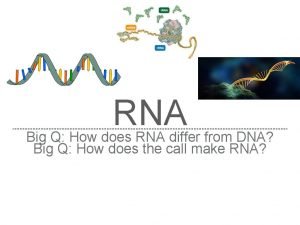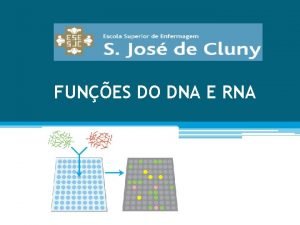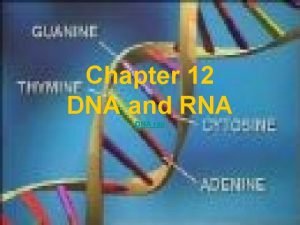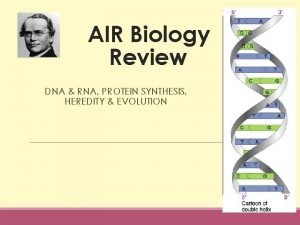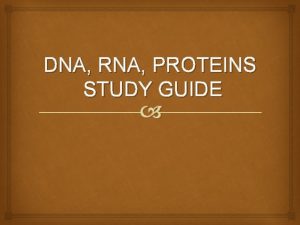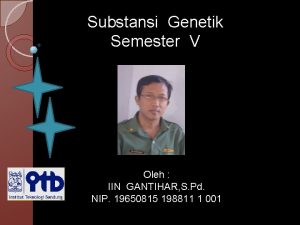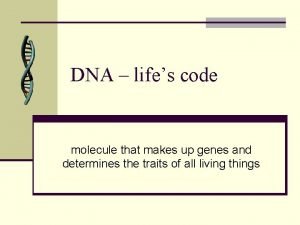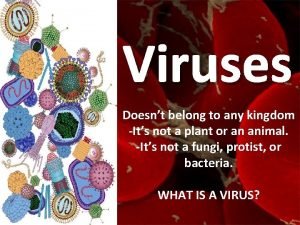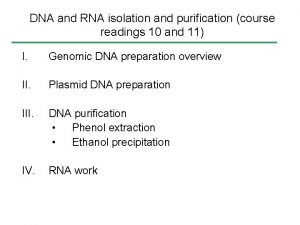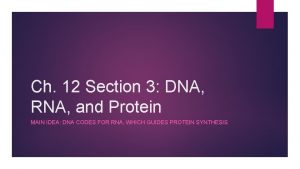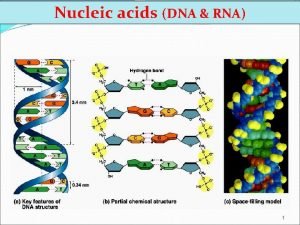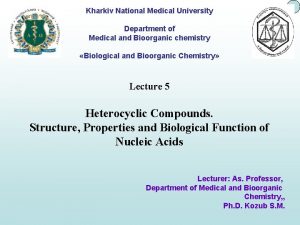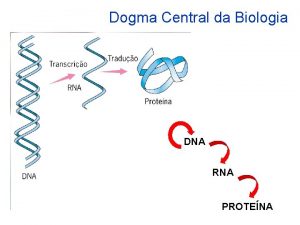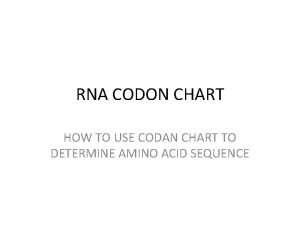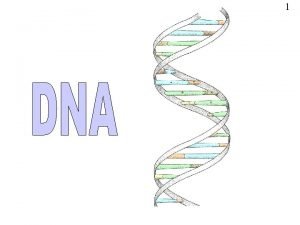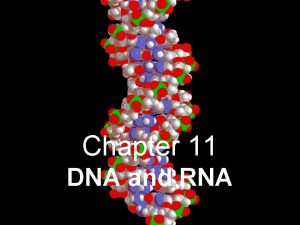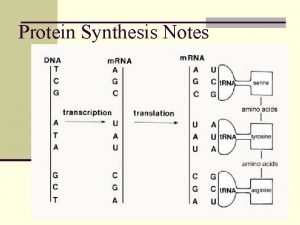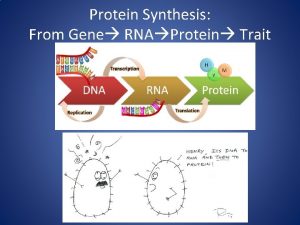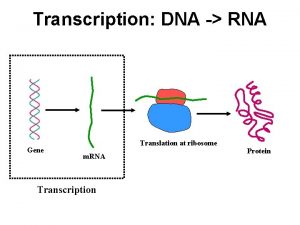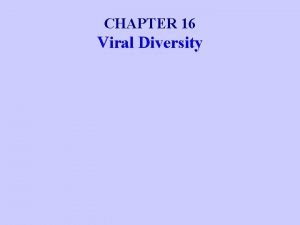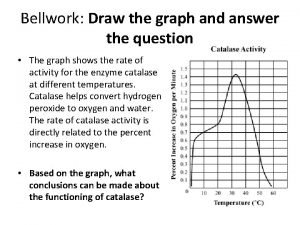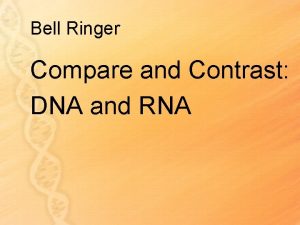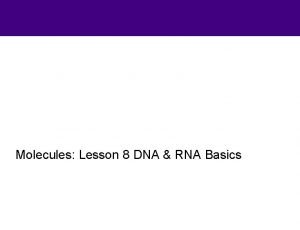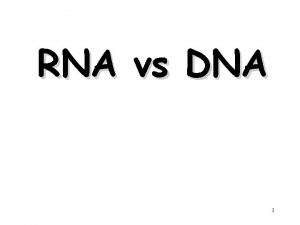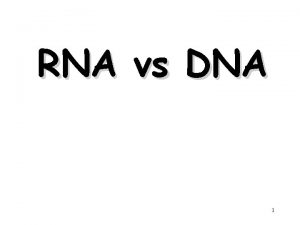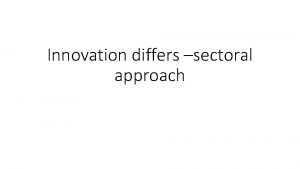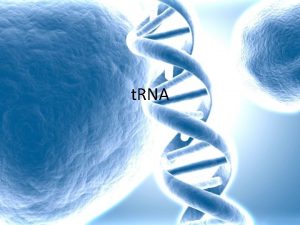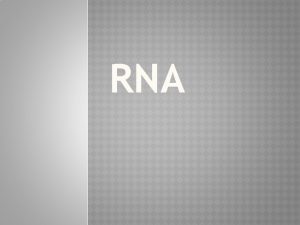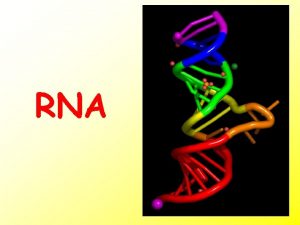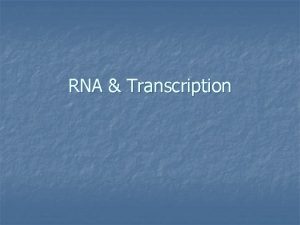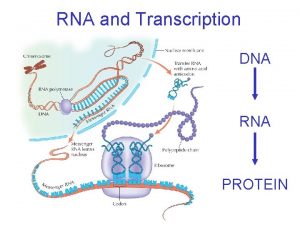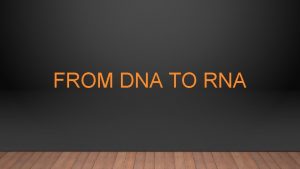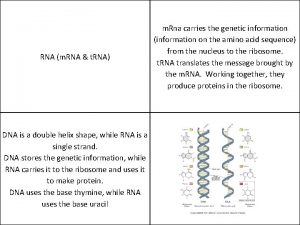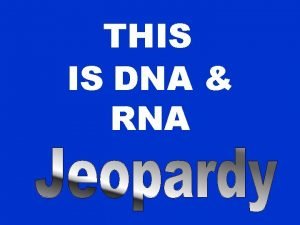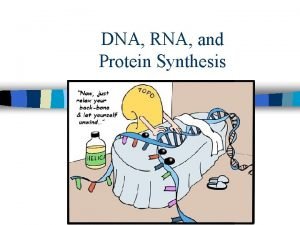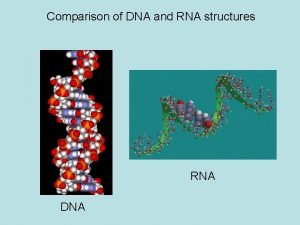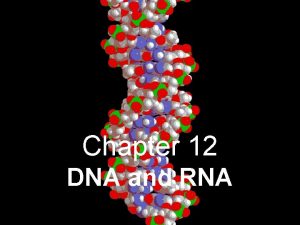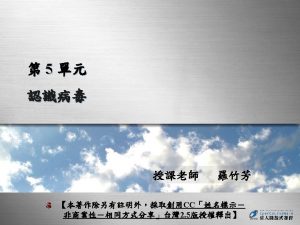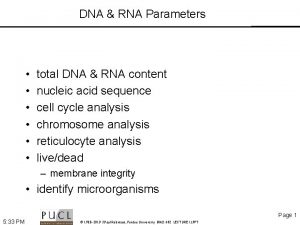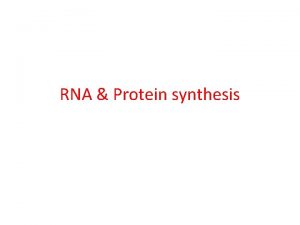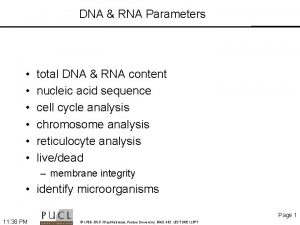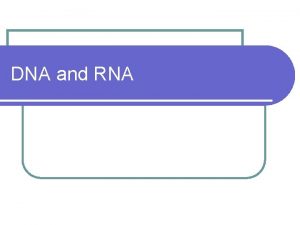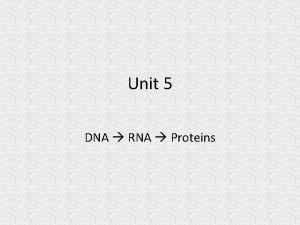RNA vs DNA 1 RNA Differs from DNA





























- Slides: 29

RNA vs DNA 1

RNA Differs from DNA • RNA has a sugar ribose • DNA has a sugar deoxyribose 2

• RNA contains the base uracil (U) • DNA has thymine (T) • RNA molecule is single-stranded • DNA is doublestranded DNA 3

Structure of RNA 4

Three Types of RNA 1. Messenger. RNA (m. RNA) 2. Ribosomal RNA (r. RNA) 3. Transfer. RNA (t. RNA) 5

. • Messenger RNA (m. RNA) copies DNA’s • • code & carries the genetic information to make a protein to the ribosomes Single chain of Nucleotides Made in the Nucleus Leaves through nuclear pores Contains the Nitrogen Bases A, G, C, U ( no T ) 6

• Ribosomal RNA (r. RNA), along with protein, makes up the ribosomes • Made in the nucleus in the nucleolus • Site of Protein Synthesis 7

• Transfer RNA (t. RNA) transfers amino acids to the ribosomes where proteins are synthesized • Single stranded molecule with amino acid at one end • Opposite end has three nucleotide bases called the anticodon 8

PROTEIN SYNTHESIS 9

• DNA contains genes, sequences of nucleotide bases • These genes code for polypeptides (proteins) • Proteins are used to build cells and do much of the work inside cells 10

§ Proteins are made of amino acids linked together by peptide bonds § 20 different amino acids exist 11

Starting with DNA • DNA ‘s code must be copied by RNA and taken to the cytoplasm • In the cytoplasm, this code must be read so amino acids can be assembled to make polypeptides (proteins) • This process is called PROTEIN SYNTHESIS 12

The Genetic Code • A codon is a sequence of 3 bases on the m. RNA that designates an amino acid • AUG – methionine or start codon tells the ribosome to begin making the protein • UAA, UAG, or UGA – stop codons tell it to stop and release the protein 13

The Genetic Code • Use the code by reading from the center to the outside • Example: AUG codes for Methionine 14

Name the Amino Acids • • • GGG? UCA? CAU? GCA? AAA? 15

Transcription and Translation 16

Protein Synthesis § The production or synthesis of polypeptide chains (proteins) § Two phases: Transcription & Translation 17

DNA RNA Protein Nuclear membrane DNA Transcription Eukaryotic Cell m. RNA Ribosome Translation Protein 18

m. RNA Transcription • During transcription, RNA polymerase binds to DNA and separates the DNA strands • RNA Polymerase then uses one strand of DNA as a template to assemble nucleotides into RNA 19

m. RNA Transcription • m. RNA leaves the nucleus through its pores and goes to the ribosomes 20

Question: § What would be the complementary RNA strand for the following DNA sequence? DNA: GCGTATG RNA: CGCAUAC 21

Translation • Translation is the process of decoding the m. RNA into a polypeptide chain • Ribosomes read m. RNA three bases or 1 codon at a time and construct the proteins 22

Translation begins when a m. RNA attaches to a ribosome. As each codon of the m. RNA moves through the ribosome, the proper amino acid is brought to the ribosome by t. RNA. The amino acid is transferred to the growing polypeptide chain. 23

24

25

Each t. RNA carries only one kind of amino acid. Each t. RNA has 3 unpaired bases called an anticodon, that is complementary to one m. RNA codon. 26

27

28

Transcription Translation 29
 Dna and genes chapter 11
Dna and genes chapter 11 Why dna is more stable than rna
Why dna is more stable than rna How does rna differ from dna? *
How does rna differ from dna? * Dna e rna
Dna e rna Dna rna
Dna rna Dna and rna coloring worksheet
Dna and rna coloring worksheet Dna protein synthesis study guide answers
Dna protein synthesis study guide answers Dna rna and proteins study guide answers
Dna rna and proteins study guide answers Substansi genetik dna dan rna mempunyai kesamaan yaitu
Substansi genetik dna dan rna mempunyai kesamaan yaitu Dna and rna
Dna and rna Cytosio
Cytosio What is the goal of replication
What is the goal of replication What kingdom do viruses belong to
What kingdom do viruses belong to Dna rna protein diagram
Dna rna protein diagram Chapter 12 section 3 dna rna and protein
Chapter 12 section 3 dna rna and protein Nucleic acid dna structure
Nucleic acid dna structure James dewey watson
James dewey watson Dna rna
Dna rna Aug amino acid
Aug amino acid What is code 1
What is code 1 Chargaff
Chargaff Unlike dna, rna contains
Unlike dna, rna contains Fraction
Fraction Dna rna protein trait
Dna rna protein trait Nucleic acids
Nucleic acids Dna to rna transcription
Dna to rna transcription Corona virus dna or rna
Corona virus dna or rna Dna to rna rules
Dna to rna rules Compare and contrast dna and rna.
Compare and contrast dna and rna. Dna and rna
Dna and rna


